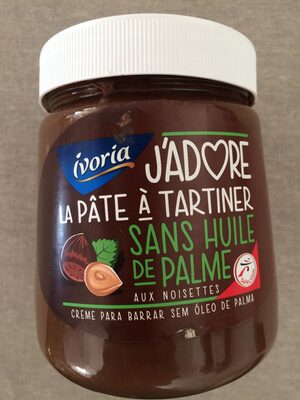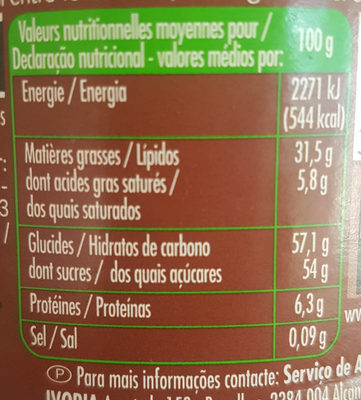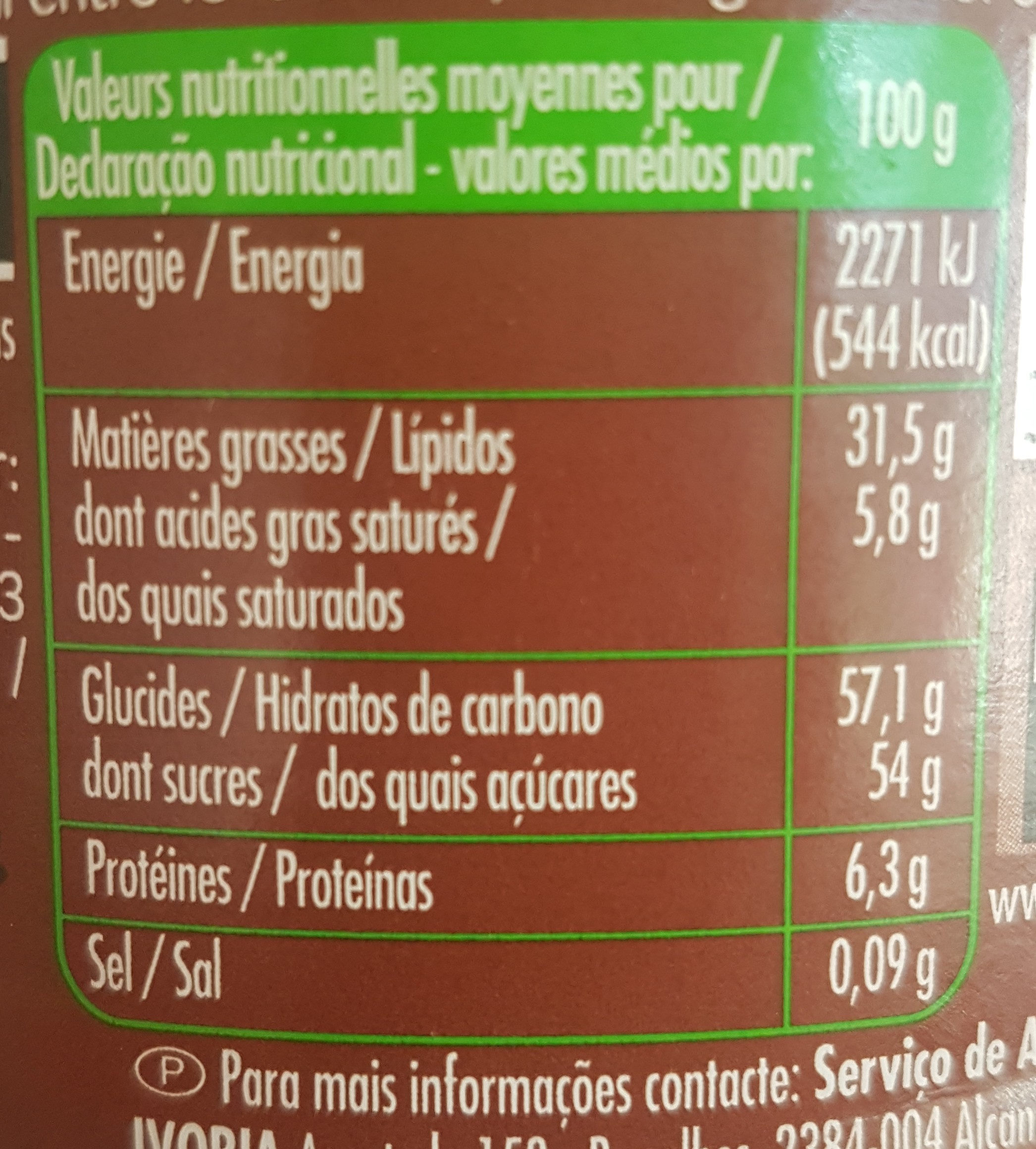Pâte à tartiner - Ivoria - 600 g
La page de ce produit n'est pas complète. Vous pouvez aider à la compléter en l'éditant et en ajoutant plus de données à partir des photos que nous avons, ou en prenant plus de photos à l'aide de l'application pour Android ou iPhone / iPad. Merci!
×
Code-barres: 3250392325664 (EAN / EAN-13)
Dénomination générique : Pate à tartiner
Quantité : 600 g
Conditionnement : Pot en plastique
Marques : Ivoria
Catégories : Petit-déjeuners, Produits à tartiner, Produits à tartiner sucrés, Pâtes à tartiner, Pâtes à tartiner aux noisettes, Pâtes à tartiner au chocolat, Pâtes à tartiner aux noisettes et au cacao
Labels, certifications, récompenses :
Labels de distributeurs, Point Vert, Sans huile de palme, Sélection Intermarché, Triman

Magasins : Intermarché
Correspondance avec vos préférences
Signaler un problème
Sources de données
Produit ajouté le par openfoodfacts-contributors
Dernière modification de la page produit le par foodvisor.
Fiche produit également modifiée par atomikoala, big-brother, chris06460, kakounski, kiliweb, off.b9cabf19-1626-4cc6-b1da-14289ca65273, off.c985bf3b-5bfa-4336-87dd-ac7a130e691c, packbot, pupuce78280, raphael0202, scanbot, segundo, teolemon, wolfgang8741, yuka.SHYwaE0vOVlxTVl5ZzhjUDUwM1k1ZkYxNHJ5VVhFMlZFTVpLSUE9PQ, yuka.V1lrdFAvc212c2NYaHN3U3pDSGIyOXhXeEovd2J6dUhPdG9ESWc9PQ, yuka.V3JrTkxvZ3RtZWtRbTloaHhDSFc2Tklrd3NDRGV6L3VkZkl3SUE9PQ, yuka.YUxKYVM2b2ZuL2t4aTlwaTEwT0wyTjlSK3FLa2ZIbThGZWNKSVE9PQ, yuka.Ylo1ZklJc05uNmdhdDhBc3dSejUwOWRiNTRXaWVqK0ZLOFE2SUE9PQ, yuka.YlpoY0gvVmVpOTB6djlodi9penBvWWgyeWJxWkREeUpMTTBOSWc9PQ, yuka.ZWFRdlNma0ZtT0V4cFBRZS9qL0o5Y3dwMzdDMFhIbXFjOEEvSVE9PQ.












